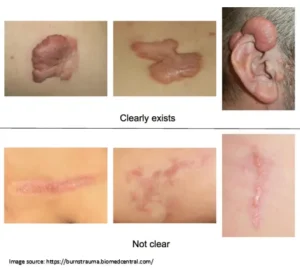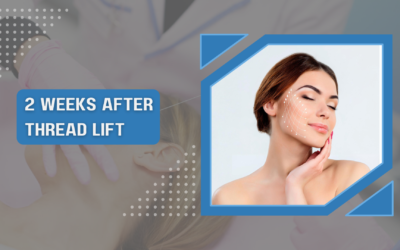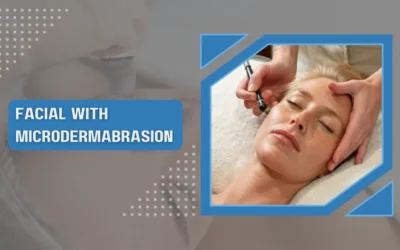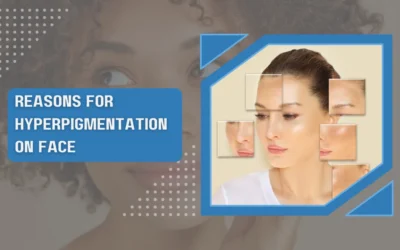Keloid Treatment in Faridabad
A keloid scar is a thick, raised scar. Although it can develop anywhere there is an injury; it usually occurs on the earlobes, cheeks, shoulders, or chest. If you are prone to getting keloids, they may appear in multiple locations.

Although keloid scars are not physically harmful, they can still be disturbing. The key is early detection or prevention. It is possible to treat keloid scars. The growth of a keloid can be reduced with early treatment.
If you don’t like how your keloid scar feels or looks, consult a skin specialist in Faridabad to treat a keloid. At KDC Clinic, Dr. Archit Aggarwal offers advanced and effective keloid treatment in Faridabad.
Moreover, Dr. Archit Aggarwal is a competent dermatologist in Faridabad who focuses on providing the best keloid treatment. The KDC Clinic is outfitted with state-of-the-art infrastructure and cutting-edge technology. It helps us to offer our clients precise results, improving their appearance and boosting their self-confidence.
Read on to learn more about keloid scars, their symptoms, causes, and treatment options.
Skin cells try to heal an injury or wound by developing a scar. In some individuals, the scar tissue develops years after the wound has healed. This additional scar tissue brings on the raised spot on your skin, known as a keloid. It can be pink, red, skin-colored, or darker than the nearby skin.
CONTACT US FOR MORE INFORMATION OR BOOK AN APPOINTMENT
Symptoms of Keloid Scars
- Thick, asymmetrical scarring, usually on the earlobes, cheeks, shoulders, or middle chest.
- Hairless, lumpy, shiny, raised skin.
- Itchy
- Painful
- Differing sizes depend on the initial injury’s severity and when the keloid stops growing.
- Reddish, brown, or purplish, depending on your skin color.
- Widely varying texture, from soft to rubbery and firm.
Causes of Keloid Scars
- Puncture wounds, cuts, severe acne, surgical scars, chicken pox, injection sites, insect bites, piercings, and tattoos.
- If you are a teen going through puberty, younger than 30 years, pregnant, or if you have a family history of keloids, you are more likely to develop a keloid.
- 15% to 20% of people with darker skin may develop keloids.
Diagnosis of Keloids
Dr. Archit Aggarwal typically diagnoses keloids after reviewing your medical history and visually observing the scar to determine its size, shape, and growth pattern.
To rule out more severe conditions like lobomycosis, a fungal skin infection, or nodular scleroderma, a form of connective tissue disease, the doctor may also perform a skin biopsy.
Treatment Options for Keloids
Not all keloids respond well to the same treatments. Dr. Archit Aggarwal often plans keloid scar treatment in Faridabad based on the patient’s age and type of keloid.
Since keloids are challenging to eradicate, using multiple types of treatment usually yields better results. Hence, Dr. Archit Aggarwal often advises patients to undergo two or more different types of keloid treatment in Faridabad.
There are several options to treat keloid scars:
- Cryotherapy: Small keloids respond best to this treatment. It involves freezing the keloid from the inside out. This process is frequently used before or following corticosteroid injections to increase the effectiveness of the injections.
- Pressure Therapy: It entails applying pressure and decreasing the blood flow to the affected area to prevent keloid recurrence using a device or specialized clothing. Although effective, many people find it challenging to adhere to this treatment, frequently used after surgery. Inconvenient as they may be, these devices must be worn for six to twelve months.
- Radiation Therapy: Following surgery, low-dose radiation therapy may aid in preventing the scar from recurrence.
- Laser Therapy: High-intensity light beams are used to shrink keloid lesions and lighten their appearance. Corticosteroid injections or pressure therapy are two treatments that are often combined with laser therapy.
- Ligature: It involves tying a surgical thread around the keloid, cutting off the blood supply, and eventually causing the keloid to fall off on its own.
- Surgery: In addition to surgery, other treatments, like silicone treatments or corticosteroid injections, are frequently used because mostly keloids recur after surgical removal.
Medication Options
- Corticosteroids injections: To lessen swelling, itchiness, and tenderness, these injections are given into the keloid to help reduce inflammation and constrict blood vessels.
- Silicone Patches and Gels: The silicone-based therapies help to minimize the size and color of keloid scars and flatten them.
For every patient, different keloid treatments are effective. You should discuss the best course for keloid treatment in Faridabad with your doctor.
Why choose Dr. Archit Aggarwal for vitiligo treatment in Faridabad?
Dr.Archit Aggarwal is a leading skin specialist in Faridabad for vitiligo treatment. He offers various treatment options according to your vitiligo type and severity.
He has vast experience in treating complex skin disorders and is well-versed with the latest techniques and procedures.
KDC Clinic is fitted with sophisticated medical technology and the latest lasers to deliver high-standard treatments.
Another reason patients visit the clinic for vitiligo treatment in Faridabad is Dr.Archit Aggarwal. His empathetic nature and willingness to communicate and listen to his patients make them feel secure and optimistic about the treatment.
Keloid Care Tailored to You
Explore personalized dermatological care crafted to address the unique needs of each person, ensuring optimal skin health for every member of your family.
Dermatology
Clear Skin Solutions
Enhance Your Aesthetic Appeal
Unlock Total Dermatology Care
Experience the zenith of skincare through our all-encompassing dermatology services. From diagnosis to treatment, we stand as your comprehensive solution for cultivating healthy, radiant skin, especially tailored for vitiligo concerns.
CONTACT US FOR MORE INFORMATION OR BOOK AN APPOINTMENT
Dr. Archit Agarwal's Dermatology Success Stories
CONTACT US FOR MORE INFORMATION OR BOOK AN APPOINTMENT
Recent Posts
2 Weeks After Thread Lift
Wondering what your skin looks like 2 weeks after a thread lift? By now, the healing process is...
Facial with Microdermabrasion: A Revitalizing Skin Treatment
Our appearance plays a significant role in how we feel about ourselves. As we age, our skin...
Reasons For Hyperpigmentation On Face
Appearances play a significant role in how we feel about ourselves and interact with others....




























